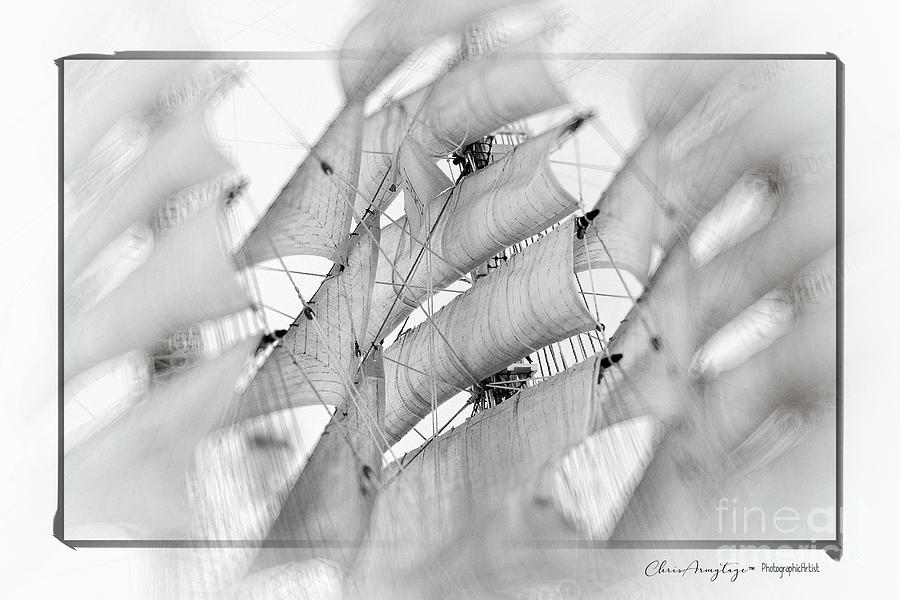
Sails

by Chris Armytage
Title
Sails
Artist
Chris Armytage
Medium
Mixed Media - Photographic Art On Digital Canvas
Description
Sails is a black and white or monochrome image of the sails of a square rigged ship, digitally altered to resemble an old fashioned Platinum or Platinotype Print. Image and artwork Copyright 2018 ChrisArmytage, Photographic Artist, Australia.
The lowest and normally largest sail on a mast is the course sail of that mast, and is referred to simply by the mast name: Foresail, mainsail, mizzen sail, jigger sail or more commonly forecourse etc.
Note that even a full-rigged ship did not usually have a lateral (square) course on the mizzen mast below the mizzen topmast. Instead, the lowest sail on the mizzen was usually a fore/aft sail - originally a lateen sail, but later a gaff sail called a spanker or driver. The key distinction between a "ship" and "barque" (in modern usage) is that a "ship" carries a square-rigged mizzen topsail (and therefore that its mizzen mast has a topsail yard and a cross-jack yard) whereas the mizzen mast of a barque has only fore-and-aft rigged sails. The cross-jack yard was the lowest yard on a ship's mizzen mast. Unlike the corresponding yards on the fore and main mast it did not usually have fittings to hang a sail from: its purpose was to control the lower edge of the topsail. In the rare case that the cross-jack yard did carry a square sail, this sail would be called the cross-jack rather than the mizzen course.
Above the course sail, in order, are:
Topsail, or
Lower topsail, if fitted.
Upper topsail, if fitted.
Topgallant sail, or
Lower topgallant sail, if fitted.
Upper topgallant sail, if fitted.
Royal sail, if fitted.
Skysail, if fitted.
Moonraker, if fitted.
The division of a sail into upper and lower sails was a matter of practicality, since undivided sails were larger and, consequently, more difficult to handle. Larger sails necessitated hiring, and paying, a larger crew. Additionally, the great size of some late-19th and 20th century vessels meant that their correspondingly large sails would have been impossible to handle had they not been divided.
Jibs are carried forward of the foremast, are tacked down on the bowsprit or jib-boom and have varying naming conventions.
Staysails may be carried between any other mast and the one in front of it or from the foremast to the bowsprit. They are named after the mast from which they are hoisted, so for example a staysail hoisted to the top of the mizzen topgallant on a stay running to the top of the main topmast would be called the mizzen topgallant staysail.
Uploaded
June 10th, 2018
Embed
Share


























































